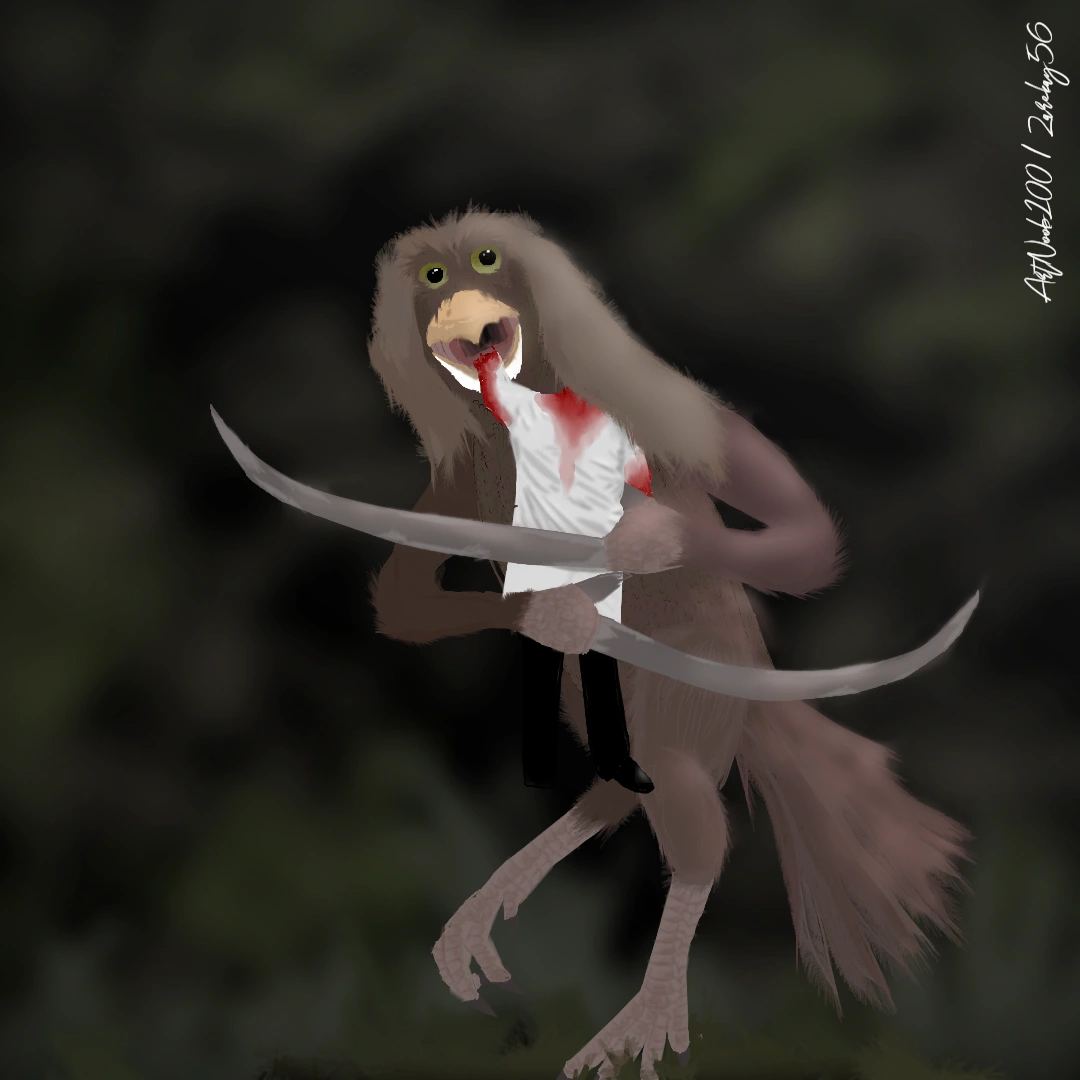
There are many worlds that probes have discovered rotating around neutron stars, of which few have been discovered to host life. Most often, these are very simple extremophilic or bacterial life.
When BooHoo was discovered to harbor life through interceptions of bioproduced gases in the upper atmosphere, an expedition was immediately organized to discover the life forms of that irradiated world devoid of oceans and shrouded in almost perpetual darkness.
The first explorations went well: they started from the brightest areas gradually moving towards the darkest and coldest ones. As they entered the darkness, they heard cries and screams, and vaguely avian sounds. It was understood from the first explorations that BooHoo was a SeedWorld of terrestrial life: derived dinosaurs, strange marsupial mammals, and neornite birds roamed the habitable ring. It was clear from their appearance that they were native to the Earth, although in some cases very divergent.
During the third expedition to the habitable regions of the ring, while the researchers slept, a strange symphony of moans and rustling plants arose from the dense shrubbery. The black-leaved vegetation, adapted to absorb maximum light, darkened further as if lamenting in sorrow, casting an eerie gloom over the two research tents.
Then, twisted figures emerged, bent as if tortured and seemingly naked, with long hair and large, haunting eyes. Among them were the disemboweled remains of the researchers, their grotesque grin the most horrifying sight of all. The surviving scientists, despite being armed, could do nothing but flee in terror.
This was the first encounter with what went down in history as Baba Plaganda, the bird-wolves of BooHoo.
The Baba Plaganda, so named based on its cries that resemble the moaning of a weeping woman, is a derived, very derived bird that inhabits the sub-polar regions of the planet. The name “Baba Plaganda” generically Indicates 14 species from the Trycolidae [feather-hair] family, distributed around the ring.
The specimens depicted here are the species identified as the one encountered in the third expedition. However, this is not certain as the conditions of perpetual twilight and the general confusion of the moment made it difficult to observe the animals; not that observation of the attackers could have been a priority on that occasion. This species is specifically known as Weeping Baba Kudlanka, due to the length of its raptorial claws which resemble the front legs of a mantis.
The Weeping Baba Kudlanka is part of the laberoramphid [beak-lipped] group of birds. These lips are not real lips, but a special type of skin that has taken over the function of lips in birds that lost them millions of years ago. The dental plaque in laberoramphids can form different shapes, and in homeostasis, it can look like a human face. This happens because of the uncanny valley effect. Their large eyes are good for seeing in the dark, and their heads are shaped like masks, constantly wrinkled.
The face can look like a small gray ape or a smiling child, though with a nightmarish quality. The creatures’ smiles, along with their raptorial teeth, are influenced by their chromatic patterns, which change with age and molt, much like the patterns on sharks or orcas. However, this effect is most prominent in adulthood.
Entry by Zarekay56. Art by Artnoob100